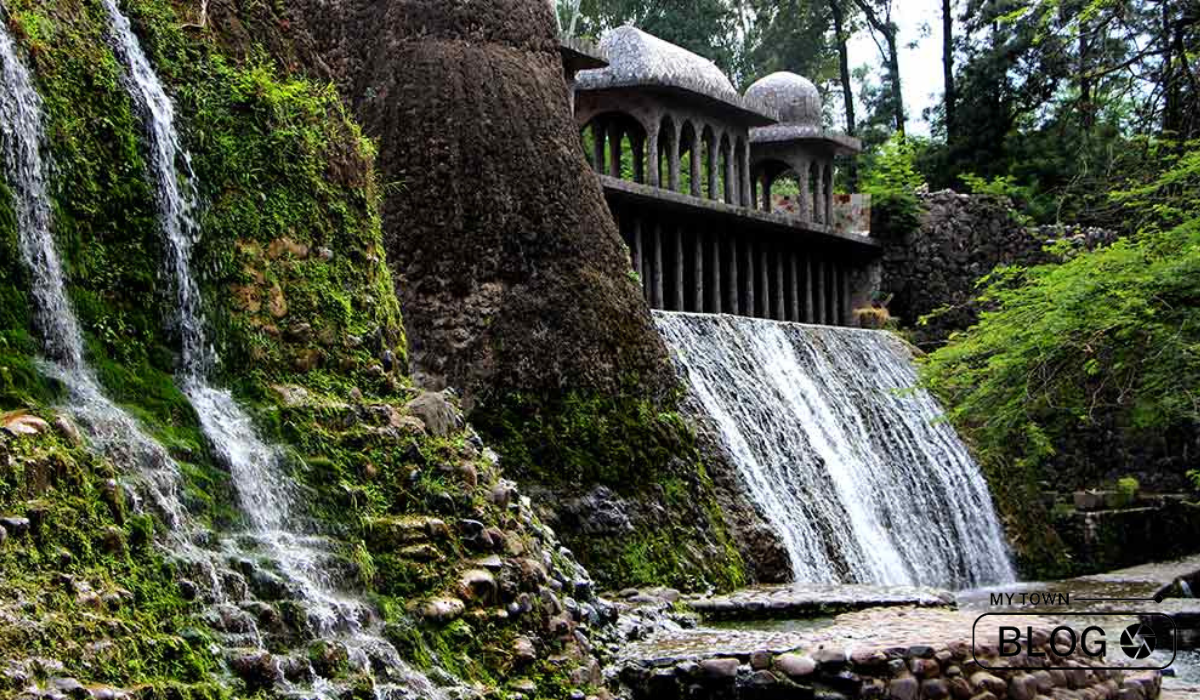A government official, Nek Chand Saini, clandestinely built the Rock Garden of Chandigarh, an ode to rock enthusiasts, in 1957. Spanning 40 acres, it ingeniously utilizes industrial and home waste. This rock garden, also known as Nek Chand Saini’s Rock Garden of Nathupur, incorporates a landscaping framework of rocks, stones, and gravel, adorned with appropriate plantings. Unlike some gardens planted around natural rock outcrops, this artificial marvel, reminiscent of Victorian rockeries, integrates rocks and plants, often mimicking natural bedrock formations.
Diverse rock garden styles, including the Japanese dry garden or “Zen garden,” with large rocks and minimal plants, showcase global influences. The removal of plants and stones from their natural habitats, once a common gardening practice, now faces legal protection challenges. The English Westmorland limestone pavement exemplifies the ecological consequences of such practices.
History:
The incorporation of rocks as decorative and symbolic elements in gardens traces its roots back over 1,500 years in Chinese and Japanese gardens. In China, imperial and elite gardens transported large scholar’s rocks, preferably soft varieties like limestone shaped by river beds or waterfalls, over great distances. Korean, people refer to these as Suseok, while individuals typically use smaller Japanese suiseki for indoor display.
In Europe, early artificial rockeries, prevalent from the late 17th century to the early 19th, did not strive to replicate natural scenes. They featured exotic minerals like feldspars, lava, and shells, often with ferns, inspired by the fashionable shell grottoes. The Golden Age of Botany (early 1700s – mid-1800s) witnessed a surge in interest in exotic plants, leading to the prominence of rock gardens dedicated to alpine plants in England from the 1830s. Firms offered complete rockeries, initially using artificial stone or concrete, later preferring weathered stone. Pulhamite, a successful material, was produced by James Pulham and Son.
Reginald Farrer’s 1919 two-volume book, “The English Rock Garden,” became a major work on growing alpine plants. Rock gardens gained popularity in tropical countries like Thailand due to their suitability for wet weather, heavy shade, and the use of plastic liners to control plant growth, facilitating easier maintenance and drainage. In Canada, they are valued for yard cooling during hot summer months.
Creator:
The Rock Garden has evolved into a cultural treasure, drawing global artists and enthusiasts to witness its unique charm. Its daring concept and enduring appeal captivate visitors who often return, leaving them in awe. Nek Chand, the creator, served as a Road Inspector in the Engineering Department of the Chandigarh Capital Project. He scoured the Shivalik Foothills, collecting stones resembling birds, animals, humans, and abstract forms on his bicycle. From 1958 to 1965, he amassed a collection of twenty thousand rock forms, a blend of natural materials and urban and industrial waste.
Depositing his collection around an improvised hut by a stream, Nek Chand meticulously built the Rock Garden. On February 24, 1973, Dr. S K Sharma accidentally discovered the garden during an Anti-Malaria mission. Dr. M S Randhawa, former Chief Commissioner of Chandigarh, recognizing its uniqueness, advocated for its preservation during a Landscape Advisory Committee meeting on June 23, 1973.
Nek Chand’s vision, free from the influence of architects and town planners, inaugurated the Rock Garden in 1976, emerging as a testament to his creativity.
Dolls Museum:
The Rock Garden houses a Dolls Museum, inaugurated by UT Administrator V.P. Singh Badnore to commemorate the second death anniversary of founder Nek Chand. The museum showcases 200 rag dolls crafted from waste cloth, a testament to Nek Chand’s artistic skills in the 1970s.
Waterfall:
The interconnected waterfalls within the garden present a unique spectacle, drawing crowds eager to capture their beauty. Easily located within the premises, these falls enhance the Rock Garden’s allure. Installed post the garden’s public opening, they contribute an extra layer of beauty, reflecting the refreshing environment of Chandigarh, the Green City.
Authorities remind visitors to exercise caution and refrain from entering the water to ensure the preservation of its purity.
Explore Aquariums and Witness Sharks and Rays in Action:
In addition to the captivating waterfalls, authorities introduced extensive aquariums long after Chandigarh’s Rock Garden gained popularity. Offering refuge from the static sculptures, these aquariums showcase an array of fascinating creatures, including stingrays, parrots, starfish, sharks, and more. Particularly appealing to young visitors, these large tanks provide an engaging spectacle as diverse beings of various shapes, sizes, and colors gracefully swim by.
Artistic Wonders:
Curious about what lies within this expansive realm of art and creativity? No need to fret; there’s an abundance of exploration awaiting you. Brace yourself for a thrilling journey as each door unveils increasingly bizarre and captivating art installations. As highlighted earlier, Nek Chand crafted these sculptures and figurines within the garden from recyclable industrial, domestic, and rural waste, enhancing their allure. Take your time; pause and appreciate these exquisite artworks that mirror the creativity and expertise of Nek Chand, the visionary.
Labyrinth of Terracotta Pots:
Chambers and alcoves adorned with tiles, mirrors, shattered bangles, tube light fragments, and even discarded toilet fixtures create a unique spectacle. Within these spaces, statues crafted from an assortment of waste materials depict various animals, birds, and human figures.
Swing into Joy:
As you progress through this expansive maze, opening door after door, numerous oversized swings ultimately reward your perseverance with the perfect antidote for fatigue. Situated at the far end of this labyrinthine garden, these swings dangle from elevated aqueducts. Simply await your turn, take a seat on a swing, and feel the refreshing breeze of Punjab tousle your hair as you sway back and forth.
Street Eats and Relaxation:
After the garden where the swings are situated, diverse food stalls and vendors actively offer street-side delights. Indulge in a quick bite or grab an affordably priced water bottle to escape the heat while observing your kids play and swing nearby. This spot is ideal for a family picnic, providing a perfect setting to unwind after an exhaustive exploration of this expansive park.
Visiting Details:
The Rock Garden is open every day of the week. It’s essential to note that the Rock Garden Chandigarh operating hours vary between the summer and winter seasons.
Operating Hours:
- April to September: 9:00 AM – 7:00 PM
- October to March: 9:00 AM – 6:00 PM
Recommended Visit Duration:
- 4-5 hours
Entry Fees:
- Adults: INR 30
- Children: INR 10
Places to Visit Near Rock Garden
- Sukhna Lake
- Zakir Hussain Rose Garden
- Leisure Valley
- Terraced Garden
(FAQs) about Rock Garden Chandigarh:
What is Rock Garden Chandigarh?
Nek Chand Saini created the unique sculptural garden, Rock Garden Chandigarh, using industrial and household waste, showcasing artistic marvels and cultural elements.
When was Rock Garden inaugurated?
Dr. S K Sharma accidentally discovered the Rock Garden in 1973, and it was inaugurated in 1976.
What can visitors expect to see in the second phase of the Rock Garden?
The second phase features a massive waterfall, amphitheaters, courtyards, intricate pathways, and a miniature village, creating a vibrant and cultural ambiance.
Are there other attractions within Rock Garden?
Yes, the garden houses a Dolls Museum displaying rag dolls made by Nek Chand, interconnected waterfalls, massive aquariums, artistic sculptures, and swings.
What materials were used to create the sculptures in Rock Garden?
Nek Chand showcases his innovative use of materials by crafting sculptures from recycled industrial, domestic, and rural waste.
Are there food options within Rock Garden?
Yes, there are food stalls near the swings where visitors can enjoy street-side snacks and relax after exploring the garden.
What are the visiting hours of Rock Garden?
The timings vary – 9:00 AM to 7:00 PM (April-September) and 9:00 AM to 6:00 PM (October-March).
How much is the entry fee to Rock Garden?
The entry fee is INR 30 for adults and INR 10 for children.
How much time is recommended for a visit?
Visitors typically spend 4-5 hours exploring the diverse attractions within Rock Garden.
Is Rock Garden suitable for a family picnic?
Yes, the garden offers a relaxed atmosphere, swings, and food stalls, making it an ideal spot for a family picnic.







